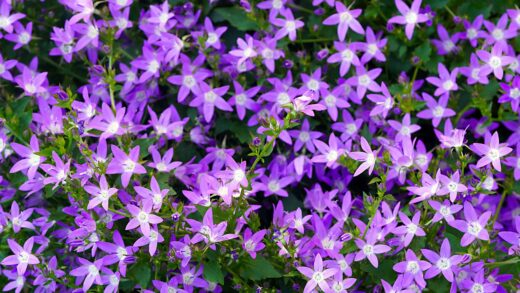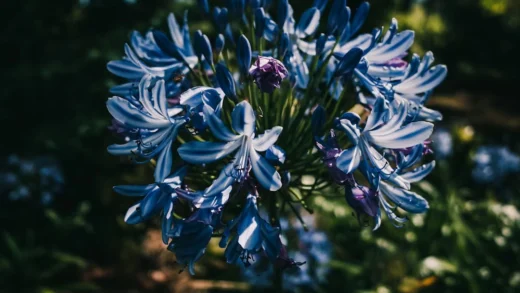The American tulip tree, this majestic and fast-growing ornamental tree, captures the hearts of many garden enthusiasts with its unique, tulip-shaped flowers and imposing appearance. However, for this impressive plant to display its most beautiful form and remain the jewel of our garden for decades, it is essential to understand and satisfy one of its most important needs: its water requirement. Proper irrigation practices not only ensure the tree’s survival but also directly influence its growth rate, canopy density, health, and resistance to diseases. In this article, we will explore in detail how you can ensure an optimal water supply for your tulip tree, whether it is a freshly planted seedling or a mature, established specimen.
The tulip tree’s relationship with water is deeply rooted in its genetic heritage, as it is native to the eastern United States, where it typically grows in moist, nutrient-rich, well-drained soils of river valleys and floodplains. This origin clearly defines its preferences in the garden as well, for although mature specimens tolerate short periods of drought surprisingly well, they show their true beauty and vitality when their soil remains consistently moist during the growing season. Think of it as an athlete who can perform by drawing on reserves but needs continuous, high-quality hydration to achieve peak performance. Our task, therefore, is to mimic these natural, ideal conditions in the garden environment as best as possible.
The tree’s water needs are not constant; they change dramatically with age, which we must definitely take into account in its care. The root system of a young, newly planted tree is still underdeveloped and shallow, so it is entirely dependent on our care during the first few critical years. In contrast, an older, firmly established tree with its extensive root system can absorb the necessary water from much deeper layers and a larger area, significantly reducing its need for irrigation. Therefore, when developing an irrigation strategy, you must always prioritize the tree’s age and stage of development.
The method of irrigation is at least as important as the quantity, and perhaps even more so for the long-term health of the tree. Frequent, shallow watering is one of the biggest mistakes we can make, as it encourages the tree to keep its roots in the top, most drought-prone layer of soil. The correct practice is less frequent but deep, thorough watering, which delivers water to the deeper soil layers, thereby encouraging the roots to expand into deeper, more stable, and moisture-rich zones. This deep root system will make the tree resilient to summer heat and periods without rainfall.
Watering the young tree: the critical period of the first years
For the young tulip tree, the first two to three years after planting are the most critical period regarding water supply, as this is when the proper development of the root system is decided. During this period, the tree is extremely vulnerable to drought because its roots have not yet penetrated deep enough to be able to draw water from the deeper soil layers. Regular and consistent watering in this case is not just a suggestion but a fundamental condition for the tree’s survival and strengthening. Our goal is to ensure that the soil around the root ball never completely dries out, but also that water does not stand around it.
More articles on this topic
The frequency and amount of watering are determined by the weather and soil type, but as a general rule, it can be said that during the growing season, especially in the hot and dry summer months, a thorough watering may be needed at least once, or even twice, a week. The best method is to allow the soil surface to dry out slightly between waterings, but to water again before it dries out completely. You can easily check the soil’s moisture content with a simple finger test: if you feel the soil is dry at a depth of 2-3 inches (5-8 cm), then it is time to water.
The correct watering technique is crucial for the young tree so that the water actually reaches the root zone. The best solution is slow, soaking irrigation, which you can achieve, for example, with a watering bag or a soaker hose operating at low pressure. Place the hose around the base of the tree and let the water slowly seep into the soil over several hours, thus ensuring deep penetration and avoiding surface runoff. With this method, the water gets exactly where it is most needed, minimizing evaporation loss.
Last but not least, mulching is one of the most effective tools for optimizing the water management of the young tulip tree. Spread a 2-4 inch (5-10 cm) layer of organic mulch, such as pine bark, wood chips, or compost, around the base of the tree, but not directly touching the trunk. The mulch layer helps to retain soil moisture by reducing evaporation, prevents the growth of weeds that would compete for water, and keeps the soil cool on hot summer days. This simple step can drastically reduce the frequency of watering and create a more stable environment for the developing roots.
Water supply for the older, established tree
Once the tulip tree reaches the age of three to five years and successfully weathers the initial, critical period, we can consider it an “established” or “mature” tree, at least in terms of its water needs. By this time, it has already developed an extensive and deep root system that can much more efficiently find and absorb the moisture stored in the soil. As a result, the tree becomes much more resistant to drought and no longer requires such frequent and regular irrigation as in its youth. The focus of care shifts from regularity to managing extreme situations.
More articles on this topic
A mature tulip tree needs watering mostly during long, rainless, and hot summer periods when natural precipitation is absent for weeks. In such cases, the tree will not immediately show signs of dehydration, but the lack of water causes it stress, which leads to premature yellowing of the leaves, a slowdown in growth, and increased susceptibility to pests. In this case, our goal is to provide a single, but abundant, deep watering that moistens the soil to a depth of at least 12-16 inches (30-40 cm).
To determine the required amount of water, you can use a good rule of thumb: calculate about 10 gallons (nearly 40 liters) of water for every inch of trunk diameter. Deliver this amount slowly and gradually, preferably focusing on the area under the edge of the tree’s canopy, the so-called dripline, as this is where most of the active, water-absorbing feeder roots are located. Avoid directly soaking the trunk, as this can promote the development of fungal diseases and bark rot.
It is important to observe the signals sent by the tree, from which you can infer its water needs. The foliage of a healthy, well-hydrated tulip tree is bright green, its leaves are firm and appear full. If the leaves droop slightly in the midday heat but recover by evening or the next morning, that is still a normal phenomenon. However, if the leaves are permanently wilted, the leaf edges begin to brown and dry out, or the lower leaves turn yellow and fall off in mass in the middle of summer, that is a clear sign of water shortage and requires immediate, thorough watering.
Irrigation techniques and best practices
Choosing the right irrigation technique is not only important for water efficiency but also for preserving the tree’s health. The least efficient and also most harmful method is frequent and shallow watering with a lawn sprinkler system. This practice not only wastes a significant portion of the water through evaporation and wind but also, by keeping the leaves constantly wet, creates an ideal environment for the spread of powdery mildew and other fungal diseases. Instead, always aim to deliver the water directly to the soil, into the root zone.
One of the most effective and recommended methods is drip irrigation or the use of a soaker hose. These systems release water at low pressure, slowly and evenly, directly onto the soil surface, minimizing evaporation loss and ensuring deep water penetration. Place the hose in a spiral or circle around the base of the tree, covering the area from the inner canopy to the dripline, to cover the entire root system.
The timing of irrigation is also a crucial factor. The most ideal time is in the early morning hours, around sunrise. During this period, the air temperature is lower and the wind is usually weaker, so evaporation is minimized, and the water has the best chance to penetrate deep into the soil. an additional benefit of morning watering is that if some water does get on the leaves, they will dry quickly during the day, reducing the risk of fungal infections. Avoid evening watering, as foliage that remains wet overnight attracts pathogens.
Finally, never forget where to water: do not concentrate the water at the base of the tree’s trunk. The older, thicker roots of the tree near the trunk are primarily responsible for anchoring and transport, while the vast majority of the small feeder roots, which absorb water and nutrients, are located in the band under the edge of the canopy, the dripline, and even beyond it. Effective irrigation, therefore, targets a wide band around the tree, ensuring that the moisture reaches the entire active root zone, thereby supporting the tree’s stable and healthy development.
Recognizing the signs of overwatering and underwatering
When caring for the tulip tree, it is essential to learn to “read” the tree’s signals, with which it draws attention to water supply problems. The symptoms of underwatering, or lack of water, are generally easier to recognize and occur more frequently. The first and most obvious sign is the wilting and drooping of the leaves, which lose their turgidity during the hottest part of the day. If this phenomenon does not disappear by the next morning, it already indicates a serious water shortage. In more severe cases, the leaf edges turn brown, dry out, and become brittle, a phenomenon called leaf scorch, and is considered a cry for help from the tree.
Further signs of chronic water shortage are the premature yellowing and dropping of leaves, which typically begins on the lower, inner branches and progresses upwards in the canopy. With this method, the tree tries to reduce its evaporation surface to save water for survival. A slowdown or complete halt in growth, as well as small or absent flowers and fruits, can also be a consequence of inadequate water supply, as the tree directs all its energy to maintaining vital functions.
The signs of overwatering can often be deceptive, as they can surprisingly resemble the symptoms of water shortage, which often leads to the worsening of the problem, i.e., further watering. The excess amount of water displaces the air from the soil particles, leading to the suffocation of the roots. The roots, lacking oxygen, in turn, cannot absorb water and nutrients, so the tree “thirsts” despite the wet soil. As a result, the leaves begin to turn yellow (chlorosis), but wilting can also be observed, with the leaves becoming limp and lifeless.
The surest way to distinguish between the two problems is to physically check the soil. Before you reach for the watering can, dig or stick your finger at least 4-6 inches (10-15 cm) deep into the soil in the tree’s dripline. If the soil at this depth is powder-dry and crumbly, then the tree is clearly thirsty. If, on the other hand, the soil is muddy, waterlogged, or perhaps emits an unpleasant, musty smell, then the problem is overwatering and poor drainage, which is the direct antechamber to root rot. In this case, stop watering immediately and examine the possibilities for improving the soil structure.
The role of soil and mulch in water management
Optimizing the tulip tree’s water supply is not limited to applying correct irrigation techniques; the key to success lies in creating a suitable soil environment. As already mentioned, the tulip tree prefers loose, organic-rich soils with good drainage. Such a soil can both retain moisture like a sponge and at the same time drain excess water, thereby ensuring the oxygen essential for the roots. Heavy, clayey, or heavily compacted soils pose the greatest challenge, as they are poorly aerated and tend to waterlog, which leads to root suffocation.
The best thing you can do is to improve the soil at the tree’s future site even before planting. Incorporate large amounts of mature compost, mushroom compost, or other organic matter into the soil over as large an area as possible. This step not only improves the soil’s structure and water management but also provides a long-term source of nutrients for the tree. If your tree is already in the garden, you can improve the soil from the surface: every year, spread a thin layer of compost under the tree, which, thanks to the work of earthworms and microorganisms, will slowly be incorporated into the deeper layers as well.
Mulching, as we have already touched upon, is an extremely important and versatile tool in water management. A layer of organic mulch of the right thickness (2-4 inches / 5-10 cm) acts as a shield on the soil surface. It drastically reduces the drying effect of the sun and wind, preventing the rapid evaporation of water from the soil. In addition, it protects the soil from compaction and erosion caused by heavy rains and moderates soil temperature fluctuations, which is particularly important for protecting the roots on hot summer days.
Water management is, therefore, a complex system in which irrigation, soil quality, and mulching are closely interconnected. If you want to see a healthy, vigorous, and majestic tulip tree in your garden, you must treat these three factors as a single unit. The creation of high-quality, organic-rich soil, consistent mulching of the soil surface, and deep watering, adapted to the tree’s age and weather conditions, together provide that stable and optimal environment in which this wonderful giant can shine in its most beautiful form for decades.


















